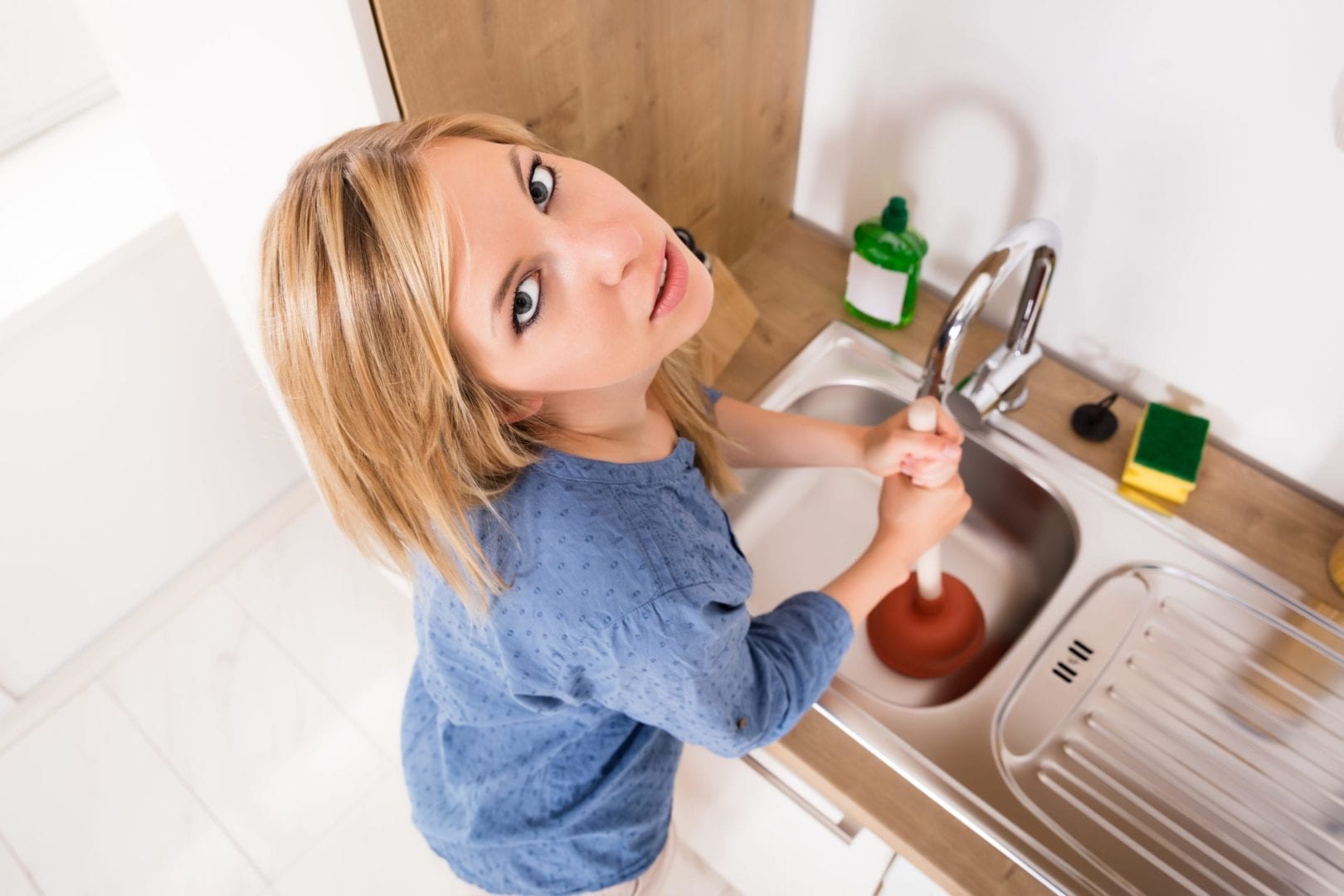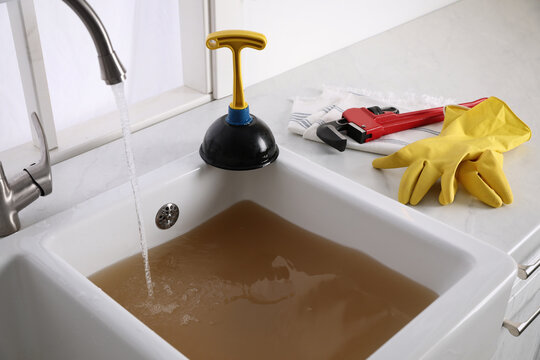Tips to Perfect Plungers and Drain Cleaners: Expert Tips
Tips to Perfect Plungers and Drain Cleaners: Expert Tips
Blog Article
Just how do you actually feel about How To Use Your Toilet Plunger Correctly in 5 Easy Steps?

Introduction
Proper maintenance of household drains is essential for preventing clogs and ensuring smooth water flow. One of the key tools in every homeowner's toolkit is the plunger, alongside various drain cleaners designed to tackle stubborn clogs effectively. This article explores how to use plungers and drain cleaners effectively to keep your drains flowing freely.
Section 1: Understanding Drain Cleaners
Types of Drain Cleaners
Drain cleaners can be chemical or enzymatic. Chemical cleaners use strong chemicals to dissolve clogs, while enzymatic cleaners use natural enzymes to break down organic matter.
How Drain Cleaners Work
Chemical cleaners react with clogs to dissolve them, while enzymatic cleaners break down organic materials like hair and grease without harming pipes.
Safety Considerations
Always wear gloves and eye protection when using chemical drain cleaners. Ensure adequate ventilation and follow manufacturer instructions carefully.
Eco-Friendly Alternatives
Consider using vinegar and baking soda or enzyme-based cleaners for eco-friendly options that are safer for pipes and the environment.
Section 2: Understanding Plungers
Types of Plungers
There are several types of plungers available, each designed for different types of drains and clogs. The most common types include cup plungers, flange plungers, and accordion plungers.
How Plungers Work
Plungers work on the principle of creating pressure and suction to dislodge clogs. When properly applied over a drain, they create a vacuum that can pull out debris or break up blockages.
Choosing the Right Plunger
Selecting the right plunger depends on the type of drain and the nature of the clog. Cup plungers are ideal for sinks and tubs, while flange plungers are better suited for toilets due to their design.
Common Mistakes with Plungers
Avoiding these mistakes ensures effective plunging: improper seal around the drain, insufficient force, and not clearing surrounding debris.
Section 3: Using Drain Cleaners Effectively
Application Techniques
Pour chemical cleaners directly into the drain opening. Allow them to work for the recommended time before flushing with hot water. Enzymatic cleaners should sit overnight.
Precautions
Avoid mixing different types of cleaners, as this can produce toxic fumes. Never use chemical cleaners in conjunction with a plunger, as splashing can occur.
Handling Stubborn Clogs
For persistent clogs, consider using a plumbing snake or calling a professional plumber to prevent damage to pipes.
Section 4: Using Plungers Effectively
Preparation
Before plunging, ensure the plunger covers the drain completely and forms a tight seal. Clear any visible debris around the drain opening.
Technique
Start with gentle plunging motions to build suction. Increase pressure gradually, using a steady rhythm. Repeat as necessary until the drain clears.
Troubleshooting Tips
If plunging doesn't work, try adjusting the seal, applying petroleum jelly for a better seal, or using a different type of plunger.
Conclusion
In conclusion, understanding how to use plungers and drain cleaners effectively is essential for maintaining healthy plumbing systems. By choosing the right tools and techniques, homeowners can tackle minor clogs and prevent major plumbing issues down the line.
HOW TO EFFECTIVELY USE A PLUNGER
Chances are you’ve had to use a plunger a time or two. Having this bathroom tool within reach keeps things running smoothly when an unexpected clog strikes. Plungers can be easy to use, but there’s more to this bathroom staple than meets the eye.
How to Use a Plunger?
A plunger clears obstructions in a toilet, sink, or drain. Plungers are the simplest and most cost-effective tool for unclogging toilets. They’re available in different shapes and sizes, but all of them work on the same principle.
A cup-shaped rubber object is attached to the end of a flexible tube. The cup is inserted into the drain and then pushed up and down to create suction. This vacuum dislodges any clogs or obstructions in the drainpipe.
How You Really Should Use a Plunger?
Position the plunger over the drain and cover the opening completely.
Make sure there is the right amount of water in the bowl. There should be enough to cover the cup of the plunger. If there is too much water, remove any excess. If there is not enough, water should be added to the bowl.
Plunge rapidly in an up-and-down motion to create suction. Do this motion for about 20 seconds.
In order to ensure that you have created a good seal, continue to apply pressure while plunging.
Repeat as many times as necessary to get the clog released.
Picking the Right Plunger
There are different drains in your home that can clog, and different plungers are specifically designed for various drains. Where some plungers are better suited to unclog a toilet, others are made to unclog sinks. Picking the right plunger can help unclog the drain more efficiently.
Flange plungers are commonly used to unclog toilets
Cup plungers are better suited to unclog sinks
Accordion plungers are best for sed for tubs, or shower drains
Automatic plungers are more pricey but can send CO2 into the drain
Beehive plungers are able to plunge wide toilet drains
What to Do if a Plunger Fails
Try a chemical drain cleaner
Mix together a homemade solution of baking soda and vinegar
Pour a combination of boiling hot water and liquid dish detergent into the drain
Calling in the Pros at Elite Heating & Air
If all other methods fail and your clog still persists, it’s time to call in a professional plumber. The team at Elite Heating & Air can help restore balance to your drains and offers additional plumbing services for all your needs.
Drain cleaning
Water line repairs
Leak detection
Leak repairs
Kitchen and bathroom remodeling
Sewer Camera Inspection
https://www.elitecustomservices.com/blog/how-to-use-a-plunger/

HOW TO EFFECTIVELY USE A PLUNGER
Chances are you’ve had to use a plunger a time or two. Having this bathroom tool within reach keeps things running smoothly when an unexpected clog strikes. Plungers can be easy to use, but there’s more to this bathroom staple than meets the eye.
How to Use a Plunger?
A plunger clears obstructions in a toilet, sink, or drain. Plungers are the simplest and most cost-effective tool for unclogging toilets. They’re available in different shapes and sizes, but all of them work on the same principle.
A cup-shaped rubber object is attached to the end of a flexible tube. The cup is inserted into the drain and then pushed up and down to create suction. This vacuum dislodges any clogs or obstructions in the drainpipe.
How You Really Should Use a Plunger?
Picking the Right Plunger
There are different drains in your home that can clog, and different plungers are specifically designed for various drains. Where some plungers are better suited to unclog a toilet, others are made to unclog sinks. Picking the right plunger can help unclog the drain more efficiently.
What to Do if a Plunger Fails
Calling in the Pros at Elite Heating & Air
If all other methods fail and your clog still persists, it’s time to call in a professional plumber. The team at Elite Heating & Air can help restore balance to your drains and offers additional plumbing services for all your needs.
https://www.elitecustomservices.com/blog/how-to-use-a-plunger/
We were guided to that editorial on A Guide to Plungers (and How to Use Them) from someone on a different site. Sharing is nice. Helping others is fun. I take joy in your readership.
Schedule Service Report this page